-
EXECUTIVE SUMMARY
-
Market Overview
-
Key Findings
-
Market Segmentation
-
Competitive Landscape
-
Challenges and Opportunities
-
Future Outlook
-
MARKET INTRODUCTION
-
Definition
-
Scope of the study
-
Research Objective
-
Assumption
-
Limitations
-
RESEARCH METHODOLOGY
-
Overview
-
Data Mining
-
Secondary Research
-
Primary Research
-
Primary Interviews and Information Gathering Process
-
Breakdown of Primary Respondents
-
Forecasting Model
-
Market Size Estimation
-
Bottom-Up Approach
-
Top-Down Approach
-
Data Triangulation
-
Validation
-
MARKET DYNAMICS
-
Overview
-
Drivers
-
Restraints
-
Opportunities
-
MARKET FACTOR ANALYSIS
-
Value chain Analysis
-
Porter's Five Forces Analysis
-
Bargaining Power of Suppliers
-
Bargaining Power of Buyers
-
Threat of New Entrants
-
Threat of Substitutes
-
Intensity of Rivalry
-
COVID-19 Impact Analysis
-
Market Impact Analysis
-
Regional Impact
-
Opportunity and Threat Analysis
-
Sugar Alternative Market, BY Type (USD Billion)
-
Natural Sweeteners
-
Artificial Sweeteners
-
Sugar Alcohols
-
Novel Sweeteners
-
Sugar Alternative Market, BY Formulation (USD Billion)
-
Liquid
-
Powder
-
Granular
-
Tablets
-
Sugar Alternative Market, BY Application (USD Billion)
-
Food Beverages
-
Pharmaceuticals
-
Cosmetics
-
Personal Care
-
Sugar Alternative Market, BY End Use (USD Billion)
-
Household
-
Food Service
-
Food Manufacturers
-
Healthcare
-
Sugar Alternative Market, BY Regional (USD Billion)
-
North America
-
US
-
Canada
-
Europe
-
Germany
-
UK
-
France
-
Russia
-
Italy
-
Spain
-
Rest of Europe
-
APAC
-
China
-
India
-
Japan
-
South Korea
-
Malaysia
-
Thailand
-
Indonesia
-
Rest of APAC
-
South America
-
Brazil
-
Mexico
-
Argentina
-
Rest of South America
-
MEA
-
GCC Countries
-
South Africa
-
Rest of MEA
-
Competitive Landscape
-
Overview
-
Competitive Analysis
-
Market share Analysis
-
Major Growth Strategy in the Sugar Alternative Market
-
Competitive Benchmarking
-
Leading Players in Terms of Number of Developments in the Sugar Alternative Market
-
Key developments and growth strategies
-
New Product Launch/Service Deployment
-
Merger Acquisitions
-
Joint Ventures
-
Major Players Financial Matrix
-
Sales and Operating Income
-
Major Players RD Expenditure. 2023
-
Company Profiles
-
Beneo
-
Financial Overview
-
Products Offered
-
Key Developments
-
SWOT Analysis
-
Key Strategies
-
Mitsubishi Corporation
-
Financial Overview
-
Products Offered
-
Key Developments
-
SWOT Analysis
-
Key Strategies
-
Neotame
-
Financial Overview
-
Products Offered
-
Key Developments
-
SWOT Analysis
-
Key Strategies
-
Chr. Hansen
-
Financial Overview
-
Products Offered
-
Key Developments
-
SWOT Analysis
-
Key Strategies
-
Cargill
-
Financial Overview
-
Products Offered
-
Key Developments
-
SWOT Analysis
-
Key Strategies
-
Sucralose International
-
Financial Overview
-
Products Offered
-
Key Developments
-
SWOT Analysis
-
Key Strategies
-
Ingredion
-
Financial Overview
-
Products Offered
-
Key Developments
-
SWOT Analysis
-
Key Strategies
-
PureCircle
-
Financial Overview
-
Products Offered
-
Key Developments
-
SWOT Analysis
-
Key Strategies
-
Notabel Foods
-
Financial Overview
-
Products Offered
-
Key Developments
-
SWOT Analysis
-
Key Strategies
-
Tate and Lyle
-
Financial Overview
-
Products Offered
-
Key Developments
-
SWOT Analysis
-
Key Strategies
-
Stevia First Corporation
-
Financial Overview
-
Products Offered
-
Key Developments
-
SWOT Analysis
-
Key Strategies
-
Sacco System
-
Financial Overview
-
Products Offered
-
Key Developments
-
SWOT Analysis
-
Key Strategies
-
Zhahongshun
-
Financial Overview
-
Products Offered
-
Key Developments
-
SWOT Analysis
-
Key Strategies
-
Archer Daniels Midland Company
-
Financial Overview
-
Products Offered
-
Key Developments
-
SWOT Analysis
-
Key Strategies
-
SweetLeaf
-
Financial Overview
-
Products Offered
-
Key Developments
-
SWOT Analysis
-
Key Strategies
-
Appendix
-
References
-
Related Reports
-
LIST Of tables
-
LIST OF ASSUMPTIONS
-
North America Sugar Alternative Market SIZE ESTIMATES & FORECAST, BY TYPE, 2019-2035 (USD Billions)
-
North America Sugar Alternative Market SIZE ESTIMATES & FORECAST, BY FORMULATION, 2019-2035 (USD Billions)
-
North America Sugar Alternative Market SIZE ESTIMATES & FORECAST, BY APPLICATION, 2019-2035 (USD Billions)
-
North America Sugar Alternative Market SIZE ESTIMATES & FORECAST, BY END USE, 2019-2035 (USD Billions)
-
North America Sugar Alternative Market SIZE ESTIMATES & FORECAST, BY REGIONAL, 2019-2035 (USD Billions)
-
US Sugar Alternative Market SIZE ESTIMATES & FORECAST, BY TYPE, 2019-2035 (USD Billions)
-
US Sugar Alternative Market SIZE ESTIMATES & FORECAST, BY FORMULATION, 2019-2035 (USD Billions)
-
US Sugar Alternative Market SIZE ESTIMATES & FORECAST, BY APPLICATION, 2019-2035 (USD Billions)
-
US Sugar Alternative Market SIZE ESTIMATES & FORECAST, BY END USE, 2019-2035 (USD Billions)
-
US Sugar Alternative Market SIZE ESTIMATES & FORECAST, BY REGIONAL, 2019-2035 (USD Billions)
-
Canada Sugar Alternative Market SIZE ESTIMATES & FORECAST, BY TYPE, 2019-2035 (USD Billions)
-
Canada Sugar Alternative Market SIZE ESTIMATES & FORECAST, BY FORMULATION, 2019-2035 (USD Billions)
-
Canada Sugar Alternative Market SIZE ESTIMATES & FORECAST, BY APPLICATION, 2019-2035 (USD Billions)
-
Canada Sugar Alternative Market SIZE ESTIMATES & FORECAST, BY END USE, 2019-2035 (USD Billions)
-
Canada Sugar Alternative Market SIZE ESTIMATES & FORECAST, BY REGIONAL, 2019-2035 (USD Billions)
-
Europe Sugar Alternative Market SIZE ESTIMATES & FORECAST, BY TYPE, 2019-2035 (USD Billions)
-
Europe Sugar Alternative Market SIZE ESTIMATES & FORECAST, BY FORMULATION, 2019-2035 (USD Billions)
-
Europe Sugar Alternative Market SIZE ESTIMATES & FORECAST, BY APPLICATION, 2019-2035 (USD Billions)
-
Europe Sugar Alternative Market SIZE ESTIMATES & FORECAST, BY END USE, 2019-2035 (USD Billions)
-
Europe Sugar Alternative Market SIZE ESTIMATES & FORECAST, BY REGIONAL, 2019-2035 (USD Billions)
-
Germany Sugar Alternative Market SIZE ESTIMATES & FORECAST, BY TYPE, 2019-2035 (USD Billions)
-
Germany Sugar Alternative Market SIZE ESTIMATES & FORECAST, BY FORMULATION, 2019-2035 (USD Billions)
-
Germany Sugar Alternative Market SIZE ESTIMATES & FORECAST, BY APPLICATION, 2019-2035 (USD Billions)
-
Germany Sugar Alternative Market SIZE ESTIMATES & FORECAST, BY END USE, 2019-2035 (USD Billions)
-
Germany Sugar Alternative Market SIZE ESTIMATES & FORECAST, BY REGIONAL, 2019-2035 (USD Billions)
-
UK Sugar Alternative Market SIZE ESTIMATES & FORECAST, BY TYPE, 2019-2035 (USD Billions)
-
UK Sugar Alternative Market SIZE ESTIMATES & FORECAST, BY FORMULATION, 2019-2035 (USD Billions)
-
UK Sugar Alternative Market SIZE ESTIMATES & FORECAST, BY APPLICATION, 2019-2035 (USD Billions)
-
UK Sugar Alternative Market SIZE ESTIMATES & FORECAST, BY END USE, 2019-2035 (USD Billions)
-
UK Sugar Alternative Market SIZE ESTIMATES & FORECAST, BY REGIONAL, 2019-2035 (USD Billions)
-
France Sugar Alternative Market SIZE ESTIMATES & FORECAST, BY TYPE, 2019-2035 (USD Billions)
-
France Sugar Alternative Market SIZE ESTIMATES & FORECAST, BY FORMULATION, 2019-2035 (USD Billions)
-
France Sugar Alternative Market SIZE ESTIMATES & FORECAST, BY APPLICATION, 2019-2035 (USD Billions)
-
France Sugar Alternative Market SIZE ESTIMATES & FORECAST, BY END USE, 2019-2035 (USD Billions)
-
France Sugar Alternative Market SIZE ESTIMATES & FORECAST, BY REGIONAL, 2019-2035 (USD Billions)
-
Russia Sugar Alternative Market SIZE ESTIMATES & FORECAST, BY TYPE, 2019-2035 (USD Billions)
-
Russia Sugar Alternative Market SIZE ESTIMATES & FORECAST, BY FORMULATION, 2019-2035 (USD Billions)
-
Russia Sugar Alternative Market SIZE ESTIMATES & FORECAST, BY APPLICATION, 2019-2035 (USD Billions)
-
Russia Sugar Alternative Market SIZE ESTIMATES & FORECAST, BY END USE, 2019-2035 (USD Billions)
-
Russia Sugar Alternative Market SIZE ESTIMATES & FORECAST, BY REGIONAL, 2019-2035 (USD Billions)
-
Italy Sugar Alternative Market SIZE ESTIMATES & FORECAST, BY TYPE, 2019-2035 (USD Billions)
-
Italy Sugar Alternative Market SIZE ESTIMATES & FORECAST, BY FORMULATION, 2019-2035 (USD Billions)
-
Italy Sugar Alternative Market SIZE ESTIMATES & FORECAST, BY APPLICATION, 2019-2035 (USD Billions)
-
Italy Sugar Alternative Market SIZE ESTIMATES & FORECAST, BY END USE, 2019-2035 (USD Billions)
-
Italy Sugar Alternative Market SIZE ESTIMATES & FORECAST, BY REGIONAL, 2019-2035 (USD Billions)
-
Spain Sugar Alternative Market SIZE ESTIMATES & FORECAST, BY TYPE, 2019-2035 (USD Billions)
-
Spain Sugar Alternative Market SIZE ESTIMATES & FORECAST, BY FORMULATION, 2019-2035 (USD Billions)
-
Spain Sugar Alternative Market SIZE ESTIMATES & FORECAST, BY APPLICATION, 2019-2035 (USD Billions)
-
Spain Sugar Alternative Market SIZE ESTIMATES & FORECAST, BY END USE, 2019-2035 (USD Billions)
-
Spain Sugar Alternative Market SIZE ESTIMATES & FORECAST, BY REGIONAL, 2019-2035 (USD Billions)
-
Rest of Europe Sugar Alternative Market SIZE ESTIMATES & FORECAST, BY TYPE, 2019-2035 (USD Billions)
-
Rest of Europe Sugar Alternative Market SIZE ESTIMATES & FORECAST, BY FORMULATION, 2019-2035 (USD Billions)
-
Rest of Europe Sugar Alternative Market SIZE ESTIMATES & FORECAST, BY APPLICATION, 2019-2035 (USD Billions)
-
Rest of Europe Sugar Alternative Market SIZE ESTIMATES & FORECAST, BY END USE, 2019-2035 (USD Billions)
-
Rest of Europe Sugar Alternative Market SIZE ESTIMATES & FORECAST, BY REGIONAL, 2019-2035 (USD Billions)
-
APAC Sugar Alternative Market SIZE ESTIMATES & FORECAST, BY TYPE, 2019-2035 (USD Billions)
-
APAC Sugar Alternative Market SIZE ESTIMATES & FORECAST, BY FORMULATION, 2019-2035 (USD Billions)
-
APAC Sugar Alternative Market SIZE ESTIMATES & FORECAST, BY APPLICATION, 2019-2035 (USD Billions)
-
APAC Sugar Alternative Market SIZE ESTIMATES & FORECAST, BY END USE, 2019-2035 (USD Billions)
-
APAC Sugar Alternative Market SIZE ESTIMATES & FORECAST, BY REGIONAL, 2019-2035 (USD Billions)
-
China Sugar Alternative Market SIZE ESTIMATES & FORECAST, BY TYPE, 2019-2035 (USD Billions)
-
China Sugar Alternative Market SIZE ESTIMATES & FORECAST, BY FORMULATION, 2019-2035 (USD Billions)
-
China Sugar Alternative Market SIZE ESTIMATES & FORECAST, BY APPLICATION, 2019-2035 (USD Billions)
-
China Sugar Alternative Market SIZE ESTIMATES & FORECAST, BY END USE, 2019-2035 (USD Billions)
-
China Sugar Alternative Market SIZE ESTIMATES & FORECAST, BY REGIONAL, 2019-2035 (USD Billions)
-
India Sugar Alternative Market SIZE ESTIMATES & FORECAST, BY TYPE, 2019-2035 (USD Billions)
-
India Sugar Alternative Market SIZE ESTIMATES & FORECAST, BY FORMULATION, 2019-2035 (USD Billions)
-
India Sugar Alternative Market SIZE ESTIMATES & FORECAST, BY APPLICATION, 2019-2035 (USD Billions)
-
India Sugar Alternative Market SIZE ESTIMATES & FORECAST, BY END USE, 2019-2035 (USD Billions)
-
India Sugar Alternative Market SIZE ESTIMATES & FORECAST, BY REGIONAL, 2019-2035 (USD Billions)
-
Japan Sugar Alternative Market SIZE ESTIMATES & FORECAST, BY TYPE, 2019-2035 (USD Billions)
-
Japan Sugar Alternative Market SIZE ESTIMATES & FORECAST, BY FORMULATION, 2019-2035 (USD Billions)
-
Japan Sugar Alternative Market SIZE ESTIMATES & FORECAST, BY APPLICATION, 2019-2035 (USD Billions)
-
Japan Sugar Alternative Market SIZE ESTIMATES & FORECAST, BY END USE, 2019-2035 (USD Billions)
-
Japan Sugar Alternative Market SIZE ESTIMATES & FORECAST, BY REGIONAL, 2019-2035 (USD Billions)
-
South Korea Sugar Alternative Market SIZE ESTIMATES & FORECAST, BY TYPE, 2019-2035 (USD Billions)
-
South Korea Sugar Alternative Market SIZE ESTIMATES & FORECAST, BY FORMULATION, 2019-2035 (USD Billions)
-
South Korea Sugar Alternative Market SIZE ESTIMATES & FORECAST, BY APPLICATION, 2019-2035 (USD Billions)
-
South Korea Sugar Alternative Market SIZE ESTIMATES & FORECAST, BY END USE, 2019-2035 (USD Billions)
-
South Korea Sugar Alternative Market SIZE ESTIMATES & FORECAST, BY REGIONAL, 2019-2035 (USD Billions)
-
Malaysia Sugar Alternative Market SIZE ESTIMATES & FORECAST, BY TYPE, 2019-2035 (USD Billions)
-
Malaysia Sugar Alternative Market SIZE ESTIMATES & FORECAST, BY FORMULATION, 2019-2035 (USD Billions)
-
Malaysia Sugar Alternative Market SIZE ESTIMATES & FORECAST, BY APPLICATION, 2019-2035 (USD Billions)
-
Malaysia Sugar Alternative Market SIZE ESTIMATES & FORECAST, BY END USE, 2019-2035 (USD Billions)
-
Malaysia Sugar Alternative Market SIZE ESTIMATES & FORECAST, BY REGIONAL, 2019-2035 (USD Billions)
-
Thailand Sugar Alternative Market SIZE ESTIMATES & FORECAST, BY TYPE, 2019-2035 (USD Billions)
-
Thailand Sugar Alternative Market SIZE ESTIMATES & FORECAST, BY FORMULATION, 2019-2035 (USD Billions)
-
Thailand Sugar Alternative Market SIZE ESTIMATES & FORECAST, BY APPLICATION, 2019-2035 (USD Billions)
-
Thailand Sugar Alternative Market SIZE ESTIMATES & FORECAST, BY END USE, 2019-2035 (USD Billions)
-
Thailand Sugar Alternative Market SIZE ESTIMATES & FORECAST, BY REGIONAL, 2019-2035 (USD Billions)
-
Indonesia Sugar Alternative Market SIZE ESTIMATES & FORECAST, BY TYPE, 2019-2035 (USD Billions)
-
Indonesia Sugar Alternative Market SIZE ESTIMATES & FORECAST, BY FORMULATION, 2019-2035 (USD Billions)
-
Indonesia Sugar Alternative Market SIZE ESTIMATES & FORECAST, BY APPLICATION, 2019-2035 (USD Billions)
-
Indonesia Sugar Alternative Market SIZE ESTIMATES & FORECAST, BY END USE, 2019-2035 (USD Billions)
-
Indonesia Sugar Alternative Market SIZE ESTIMATES & FORECAST, BY REGIONAL, 2019-2035 (USD Billions)
-
Rest of APAC Sugar Alternative Market SIZE ESTIMATES & FORECAST, BY TYPE, 2019-2035 (USD Billions)
-
Rest of APAC Sugar Alternative Market SIZE ESTIMATES & FORECAST, BY FORMULATION, 2019-2035 (USD Billions)
-
Rest of APAC Sugar Alternative Market SIZE ESTIMATES & FORECAST, BY APPLICATION, 2019-2035 (USD Billions)
-
Rest of APAC Sugar Alternative Market SIZE ESTIMATES & FORECAST, BY END USE, 2019-2035 (USD Billions)
-
Rest of APAC Sugar Alternative Market SIZE ESTIMATES & FORECAST, BY REGIONAL, 2019-2035 (USD Billions)
-
South America Sugar Alternative Market SIZE ESTIMATES & FORECAST, BY TYPE, 2019-2035 (USD Billions)
-
South America Sugar Alternative Market SIZE ESTIMATES & FORECAST, BY FORMULATION, 2019-2035 (USD Billions)
-
South America Sugar Alternative Market SIZE ESTIMATES & FORECAST, BY APPLICATION, 2019-2035 (USD Billions)
-
South America Sugar Alternative Market SIZE ESTIMATES & FORECAST, BY END USE, 2019-2035 (USD Billions)
-
South America Sugar Alternative Market SIZE ESTIMATES & FORECAST, BY REGIONAL, 2019-2035 (USD Billions)
-
Brazil Sugar Alternative Market SIZE ESTIMATES & FORECAST, BY TYPE, 2019-2035 (USD Billions)
-
Brazil Sugar Alternative Market SIZE ESTIMATES & FORECAST, BY FORMULATION, 2019-2035 (USD Billions)
-
Brazil Sugar Alternative Market SIZE ESTIMATES & FORECAST, BY APPLICATION, 2019-2035 (USD Billions)
-
Brazil Sugar Alternative Market SIZE ESTIMATES & FORECAST, BY END USE, 2019-2035 (USD Billions)
-
Brazil Sugar Alternative Market SIZE ESTIMATES & FORECAST, BY REGIONAL, 2019-2035 (USD Billions)
-
Mexico Sugar Alternative Market SIZE ESTIMATES & FORECAST, BY TYPE, 2019-2035 (USD Billions)
-
Mexico Sugar Alternative Market SIZE ESTIMATES & FORECAST, BY FORMULATION, 2019-2035 (USD Billions)
-
Mexico Sugar Alternative Market SIZE ESTIMATES & FORECAST, BY APPLICATION, 2019-2035 (USD Billions)
-
Mexico Sugar Alternative Market SIZE ESTIMATES & FORECAST, BY END USE, 2019-2035 (USD Billions)
-
Mexico Sugar Alternative Market SIZE ESTIMATES & FORECAST, BY REGIONAL, 2019-2035 (USD Billions)
-
Argentina Sugar Alternative Market SIZE ESTIMATES & FORECAST, BY TYPE, 2019-2035 (USD Billions)
-
Argentina Sugar Alternative Market SIZE ESTIMATES & FORECAST, BY FORMULATION, 2019-2035 (USD Billions)
-
Argentina Sugar Alternative Market SIZE ESTIMATES & FORECAST, BY APPLICATION, 2019-2035 (USD Billions)
-
Argentina Sugar Alternative Market SIZE ESTIMATES & FORECAST, BY END USE, 2019-2035 (USD Billions)
-
Argentina Sugar Alternative Market SIZE ESTIMATES & FORECAST, BY REGIONAL, 2019-2035 (USD Billions)
-
Rest of South America Sugar Alternative Market SIZE ESTIMATES & FORECAST, BY TYPE, 2019-2035 (USD Billions)
-
Rest of South America Sugar Alternative Market SIZE ESTIMATES & FORECAST, BY FORMULATION, 2019-2035 (USD Billions)
-
Rest of South America Sugar Alternative Market SIZE ESTIMATES & FORECAST, BY APPLICATION, 2019-2035 (USD Billions)
-
Rest of South America Sugar Alternative Market SIZE ESTIMATES & FORECAST, BY END USE, 2019-2035 (USD Billions)
-
Rest of South America Sugar Alternative Market SIZE ESTIMATES & FORECAST, BY REGIONAL, 2019-2035 (USD Billions)
-
MEA Sugar Alternative Market SIZE ESTIMATES & FORECAST, BY TYPE, 2019-2035 (USD Billions)
-
MEA Sugar Alternative Market SIZE ESTIMATES & FORECAST, BY FORMULATION, 2019-2035 (USD Billions)
-
MEA Sugar Alternative Market SIZE ESTIMATES & FORECAST, BY APPLICATION, 2019-2035 (USD Billions)
-
MEA Sugar Alternative Market SIZE ESTIMATES & FORECAST, BY END USE, 2019-2035 (USD Billions)
-
MEA Sugar Alternative Market SIZE ESTIMATES & FORECAST, BY REGIONAL, 2019-2035 (USD Billions)
-
GCC Countries Sugar Alternative Market SIZE ESTIMATES & FORECAST, BY TYPE, 2019-2035 (USD Billions)
-
GCC Countries Sugar Alternative Market SIZE ESTIMATES & FORECAST, BY FORMULATION, 2019-2035 (USD Billions)
-
GCC Countries Sugar Alternative Market SIZE ESTIMATES & FORECAST, BY APPLICATION, 2019-2035 (USD Billions)
-
GCC Countries Sugar Alternative Market SIZE ESTIMATES & FORECAST, BY END USE, 2019-2035 (USD Billions)
-
GCC Countries Sugar Alternative Market SIZE ESTIMATES & FORECAST, BY REGIONAL, 2019-2035 (USD Billions)
-
South Africa Sugar Alternative Market SIZE ESTIMATES & FORECAST, BY TYPE, 2019-2035 (USD Billions)
-
South Africa Sugar Alternative Market SIZE ESTIMATES & FORECAST, BY FORMULATION, 2019-2035 (USD Billions)
-
South Africa Sugar Alternative Market SIZE ESTIMATES & FORECAST, BY APPLICATION, 2019-2035 (USD Billions)
-
South Africa Sugar Alternative Market SIZE ESTIMATES & FORECAST, BY END USE, 2019-2035 (USD Billions)
-
South Africa Sugar Alternative Market SIZE ESTIMATES & FORECAST, BY REGIONAL, 2019-2035 (USD Billions)
-
Rest of MEA Sugar Alternative Market SIZE ESTIMATES & FORECAST, BY TYPE, 2019-2035 (USD Billions)
-
Rest of MEA Sugar Alternative Market SIZE ESTIMATES & FORECAST, BY FORMULATION, 2019-2035 (USD Billions)
-
Rest of MEA Sugar Alternative Market SIZE ESTIMATES & FORECAST, BY APPLICATION, 2019-2035 (USD Billions)
-
Rest of MEA Sugar Alternative Market SIZE ESTIMATES & FORECAST, BY END USE, 2019-2035 (USD Billions)
-
Rest of MEA Sugar Alternative Market SIZE ESTIMATES & FORECAST, BY REGIONAL, 2019-2035 (USD Billions)
-
PRODUCT LAUNCH/PRODUCT DEVELOPMENT/APPROVAL
-
ACQUISITION/PARTNERSHIP
-
LIST Of figures
-
MARKET SYNOPSIS
-
NORTH AMERICA SUGAR ALTERNATIVE MARKET ANALYSIS
-
US SUGAR ALTERNATIVE MARKET ANALYSIS BY TYPE
-
US SUGAR ALTERNATIVE MARKET ANALYSIS BY FORMULATION
-
US SUGAR ALTERNATIVE MARKET ANALYSIS BY APPLICATION
-
US SUGAR ALTERNATIVE MARKET ANALYSIS BY END USE
-
US SUGAR ALTERNATIVE MARKET ANALYSIS BY REGIONAL
-
CANADA SUGAR ALTERNATIVE MARKET ANALYSIS BY TYPE
-
CANADA SUGAR ALTERNATIVE MARKET ANALYSIS BY FORMULATION
-
CANADA SUGAR ALTERNATIVE MARKET ANALYSIS BY APPLICATION
-
CANADA SUGAR ALTERNATIVE MARKET ANALYSIS BY END USE
-
CANADA SUGAR ALTERNATIVE MARKET ANALYSIS BY REGIONAL
-
EUROPE SUGAR ALTERNATIVE MARKET ANALYSIS
-
GERMANY SUGAR ALTERNATIVE MARKET ANALYSIS BY TYPE
-
GERMANY SUGAR ALTERNATIVE MARKET ANALYSIS BY FORMULATION
-
GERMANY SUGAR ALTERNATIVE MARKET ANALYSIS BY APPLICATION
-
GERMANY SUGAR ALTERNATIVE MARKET ANALYSIS BY END USE
-
GERMANY SUGAR ALTERNATIVE MARKET ANALYSIS BY REGIONAL
-
UK SUGAR ALTERNATIVE MARKET ANALYSIS BY TYPE
-
UK SUGAR ALTERNATIVE MARKET ANALYSIS BY FORMULATION
-
UK SUGAR ALTERNATIVE MARKET ANALYSIS BY APPLICATION
-
UK SUGAR ALTERNATIVE MARKET ANALYSIS BY END USE
-
UK SUGAR ALTERNATIVE MARKET ANALYSIS BY REGIONAL
-
FRANCE SUGAR ALTERNATIVE MARKET ANALYSIS BY TYPE
-
FRANCE SUGAR ALTERNATIVE MARKET ANALYSIS BY FORMULATION
-
FRANCE SUGAR ALTERNATIVE MARKET ANALYSIS BY APPLICATION
-
FRANCE SUGAR ALTERNATIVE MARKET ANALYSIS BY END USE
-
FRANCE SUGAR ALTERNATIVE MARKET ANALYSIS BY REGIONAL
-
RUSSIA SUGAR ALTERNATIVE MARKET ANALYSIS BY TYPE
-
RUSSIA SUGAR ALTERNATIVE MARKET ANALYSIS BY FORMULATION
-
RUSSIA SUGAR ALTERNATIVE MARKET ANALYSIS BY APPLICATION
-
RUSSIA SUGAR ALTERNATIVE MARKET ANALYSIS BY END USE
-
RUSSIA SUGAR ALTERNATIVE MARKET ANALYSIS BY REGIONAL
-
ITALY SUGAR ALTERNATIVE MARKET ANALYSIS BY TYPE
-
ITALY SUGAR ALTERNATIVE MARKET ANALYSIS BY FORMULATION
-
ITALY SUGAR ALTERNATIVE MARKET ANALYSIS BY APPLICATION
-
ITALY SUGAR ALTERNATIVE MARKET ANALYSIS BY END USE
-
ITALY SUGAR ALTERNATIVE MARKET ANALYSIS BY REGIONAL
-
SPAIN SUGAR ALTERNATIVE MARKET ANALYSIS BY TYPE
-
SPAIN SUGAR ALTERNATIVE MARKET ANALYSIS BY FORMULATION
-
SPAIN SUGAR ALTERNATIVE MARKET ANALYSIS BY APPLICATION
-
SPAIN SUGAR ALTERNATIVE MARKET ANALYSIS BY END USE
-
SPAIN SUGAR ALTERNATIVE MARKET ANALYSIS BY REGIONAL
-
REST OF EUROPE SUGAR ALTERNATIVE MARKET ANALYSIS BY TYPE
-
REST OF EUROPE SUGAR ALTERNATIVE MARKET ANALYSIS BY FORMULATION
-
REST OF EUROPE SUGAR ALTERNATIVE MARKET ANALYSIS BY APPLICATION
-
REST OF EUROPE SUGAR ALTERNATIVE MARKET ANALYSIS BY END USE
-
REST OF EUROPE SUGAR ALTERNATIVE MARKET ANALYSIS BY REGIONAL
-
APAC SUGAR ALTERNATIVE MARKET ANALYSIS
-
CHINA SUGAR ALTERNATIVE MARKET ANALYSIS BY TYPE
-
CHINA SUGAR ALTERNATIVE MARKET ANALYSIS BY FORMULATION
-
CHINA SUGAR ALTERNATIVE MARKET ANALYSIS BY APPLICATION
-
CHINA SUGAR ALTERNATIVE MARKET ANALYSIS BY END USE
-
CHINA SUGAR ALTERNATIVE MARKET ANALYSIS BY REGIONAL
-
INDIA SUGAR ALTERNATIVE MARKET ANALYSIS BY TYPE
-
INDIA SUGAR ALTERNATIVE MARKET ANALYSIS BY FORMULATION
-
INDIA SUGAR ALTERNATIVE MARKET ANALYSIS BY APPLICATION
-
INDIA SUGAR ALTERNATIVE MARKET ANALYSIS BY END USE
-
INDIA SUGAR ALTERNATIVE MARKET ANALYSIS BY REGIONAL
-
JAPAN SUGAR ALTERNATIVE MARKET ANALYSIS BY TYPE
-
JAPAN SUGAR ALTERNATIVE MARKET ANALYSIS BY FORMULATION
-
JAPAN SUGAR ALTERNATIVE MARKET ANALYSIS BY APPLICATION
-
JAPAN SUGAR ALTERNATIVE MARKET ANALYSIS BY END USE
-
JAPAN SUGAR ALTERNATIVE MARKET ANALYSIS BY REGIONAL
-
SOUTH KOREA SUGAR ALTERNATIVE MARKET ANALYSIS BY TYPE
-
SOUTH KOREA SUGAR ALTERNATIVE MARKET ANALYSIS BY FORMULATION
-
SOUTH KOREA SUGAR ALTERNATIVE MARKET ANALYSIS BY APPLICATION
-
SOUTH KOREA SUGAR ALTERNATIVE MARKET ANALYSIS BY END USE
-
SOUTH KOREA SUGAR ALTERNATIVE MARKET ANALYSIS BY REGIONAL
-
MALAYSIA SUGAR ALTERNATIVE MARKET ANALYSIS BY TYPE
-
MALAYSIA SUGAR ALTERNATIVE MARKET ANALYSIS BY FORMULATION
-
MALAYSIA SUGAR ALTERNATIVE MARKET ANALYSIS BY APPLICATION
-
MALAYSIA SUGAR ALTERNATIVE MARKET ANALYSIS BY END USE
-
MALAYSIA SUGAR ALTERNATIVE MARKET ANALYSIS BY REGIONAL
-
THAILAND SUGAR ALTERNATIVE MARKET ANALYSIS BY TYPE
-
THAILAND SUGAR ALTERNATIVE MARKET ANALYSIS BY FORMULATION
-
THAILAND SUGAR ALTERNATIVE MARKET ANALYSIS BY APPLICATION
-
THAILAND SUGAR ALTERNATIVE MARKET ANALYSIS BY END USE
-
THAILAND SUGAR ALTERNATIVE MARKET ANALYSIS BY REGIONAL
-
INDONESIA SUGAR ALTERNATIVE MARKET ANALYSIS BY TYPE
-
INDONESIA SUGAR ALTERNATIVE MARKET ANALYSIS BY FORMULATION
-
INDONESIA SUGAR ALTERNATIVE MARKET ANALYSIS BY APPLICATION
-
INDONESIA SUGAR ALTERNATIVE MARKET ANALYSIS BY END USE
-
INDONESIA SUGAR ALTERNATIVE MARKET ANALYSIS BY REGIONAL
-
REST OF APAC SUGAR ALTERNATIVE MARKET ANALYSIS BY TYPE
-
REST OF APAC SUGAR ALTERNATIVE MARKET ANALYSIS BY FORMULATION
-
REST OF APAC SUGAR ALTERNATIVE MARKET ANALYSIS BY APPLICATION
-
REST OF APAC SUGAR ALTERNATIVE MARKET ANALYSIS BY END USE
-
REST OF APAC SUGAR ALTERNATIVE MARKET ANALYSIS BY REGIONAL
-
SOUTH AMERICA SUGAR ALTERNATIVE MARKET ANALYSIS
-
BRAZIL SUGAR ALTERNATIVE MARKET ANALYSIS BY TYPE
-
BRAZIL SUGAR ALTERNATIVE MARKET ANALYSIS BY FORMULATION
-
BRAZIL SUGAR ALTERNATIVE MARKET ANALYSIS BY APPLICATION
-
BRAZIL SUGAR ALTERNATIVE MARKET ANALYSIS BY END USE
-
BRAZIL SUGAR ALTERNATIVE MARKET ANALYSIS BY REGIONAL
-
MEXICO SUGAR ALTERNATIVE MARKET ANALYSIS BY TYPE
-
MEXICO SUGAR ALTERNATIVE MARKET ANALYSIS BY FORMULATION
-
MEXICO SUGAR ALTERNATIVE MARKET ANALYSIS BY APPLICATION
-
MEXICO SUGAR ALTERNATIVE MARKET ANALYSIS BY END USE
-
MEXICO SUGAR ALTERNATIVE MARKET ANALYSIS BY REGIONAL
-
ARGENTINA SUGAR ALTERNATIVE MARKET ANALYSIS BY TYPE
-
ARGENTINA SUGAR ALTERNATIVE MARKET ANALYSIS BY FORMULATION
-
ARGENTINA SUGAR ALTERNATIVE MARKET ANALYSIS BY APPLICATION
-
ARGENTINA SUGAR ALTERNATIVE MARKET ANALYSIS BY END USE
-
ARGENTINA SUGAR ALTERNATIVE MARKET ANALYSIS BY REGIONAL
-
REST OF SOUTH AMERICA SUGAR ALTERNATIVE MARKET ANALYSIS BY TYPE
-
REST OF SOUTH AMERICA SUGAR ALTERNATIVE MARKET ANALYSIS BY FORMULATION
-
REST OF SOUTH AMERICA SUGAR ALTERNATIVE MARKET ANALYSIS BY APPLICATION
-
REST OF SOUTH AMERICA SUGAR ALTERNATIVE MARKET ANALYSIS BY END USE
-
REST OF SOUTH AMERICA SUGAR ALTERNATIVE MARKET ANALYSIS BY REGIONAL
-
MEA SUGAR ALTERNATIVE MARKET ANALYSIS
-
GCC COUNTRIES SUGAR ALTERNATIVE MARKET ANALYSIS BY TYPE
-
GCC COUNTRIES SUGAR ALTERNATIVE MARKET ANALYSIS BY FORMULATION
-
GCC COUNTRIES SUGAR ALTERNATIVE MARKET ANALYSIS BY APPLICATION
-
GCC COUNTRIES SUGAR ALTERNATIVE MARKET ANALYSIS BY END USE
-
GCC COUNTRIES SUGAR ALTERNATIVE MARKET ANALYSIS BY REGIONAL
-
SOUTH AFRICA SUGAR ALTERNATIVE MARKET ANALYSIS BY TYPE
-
SOUTH AFRICA SUGAR ALTERNATIVE MARKET ANALYSIS BY FORMULATION
-
SOUTH AFRICA SUGAR ALTERNATIVE MARKET ANALYSIS BY APPLICATION
-
SOUTH AFRICA SUGAR ALTERNATIVE MARKET ANALYSIS BY END USE
-
SOUTH AFRICA SUGAR ALTERNATIVE MARKET ANALYSIS BY REGIONAL
-
REST OF MEA SUGAR ALTERNATIVE MARKET ANALYSIS BY TYPE
-
REST OF MEA SUGAR ALTERNATIVE MARKET ANALYSIS BY FORMULATION
-
REST OF MEA SUGAR ALTERNATIVE MARKET ANALYSIS BY APPLICATION
-
REST OF MEA SUGAR ALTERNATIVE MARKET ANALYSIS BY END USE
-
REST OF MEA SUGAR ALTERNATIVE MARKET ANALYSIS BY REGIONAL
-
KEY BUYING CRITERIA OF SUGAR ALTERNATIVE MARKET
-
RESEARCH PROCESS OF MRFR
-
DRO ANALYSIS OF SUGAR ALTERNATIVE MARKET
-
DRIVERS IMPACT ANALYSIS: SUGAR ALTERNATIVE MARKET
-
RESTRAINTS IMPACT ANALYSIS: SUGAR ALTERNATIVE MARKET
-
SUPPLY / VALUE CHAIN: SUGAR ALTERNATIVE MARKET
-
SUGAR ALTERNATIVE MARKET, BY TYPE, 2025 (% SHARE)
-
SUGAR ALTERNATIVE MARKET, BY TYPE, 2019 TO 2035 (USD Billions)
-
SUGAR ALTERNATIVE MARKET, BY FORMULATION, 2025 (% SHARE)
-
SUGAR ALTERNATIVE MARKET, BY FORMULATION, 2019 TO 2035 (USD Billions)
-
SUGAR ALTERNATIVE MARKET, BY APPLICATION, 2025 (% SHARE)
-
SUGAR ALTERNATIVE MARKET, BY APPLICATION, 2019 TO 2035 (USD Billions)
-
SUGAR ALTERNATIVE MARKET, BY END USE, 2025 (% SHARE)
-
SUGAR ALTERNATIVE MARKET, BY END USE, 2019 TO 2035 (USD Billions)
-
SUGAR ALTERNATIVE MARKET, BY REGIONAL, 2025 (% SHARE)
-
SUGAR ALTERNATIVE MARKET, BY REGIONAL, 2019 TO 2035 (USD Billions)
-
BENCHMARKING OF MAJOR COMPETITORS

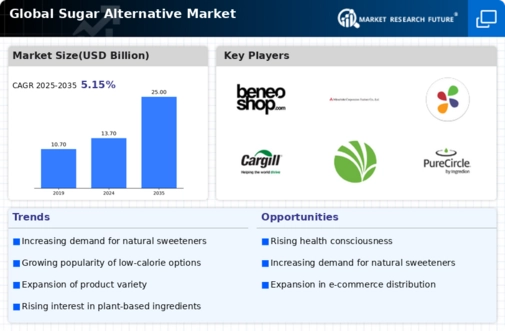
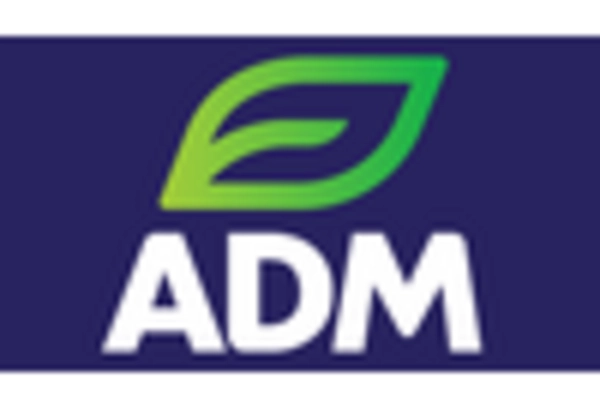


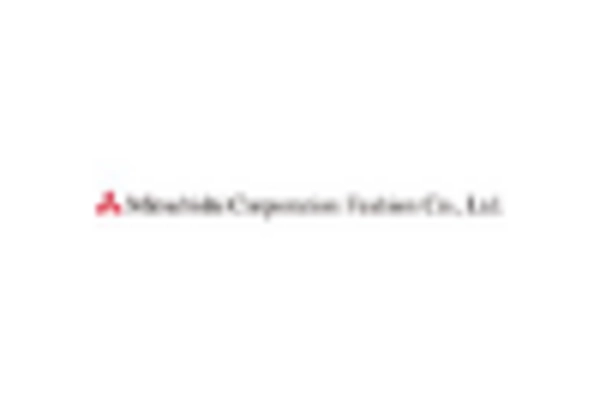
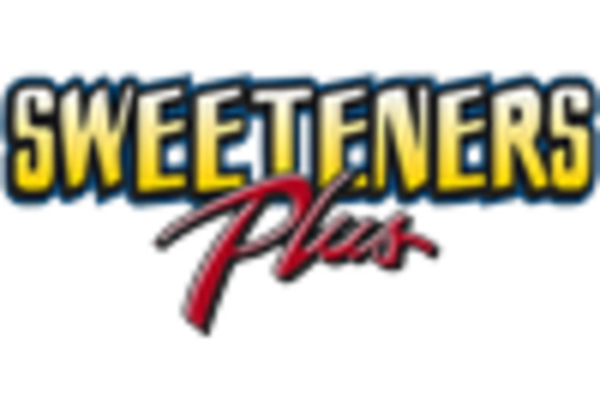
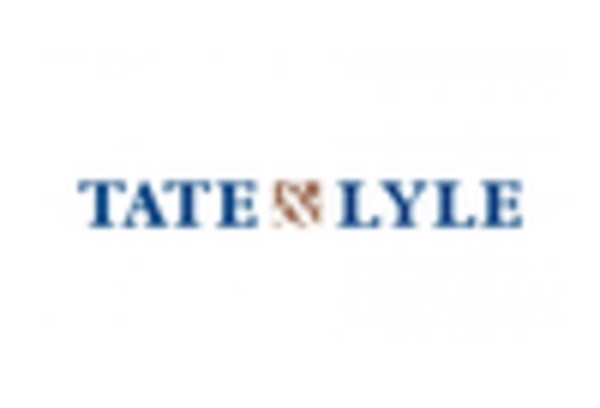









Leave a Comment